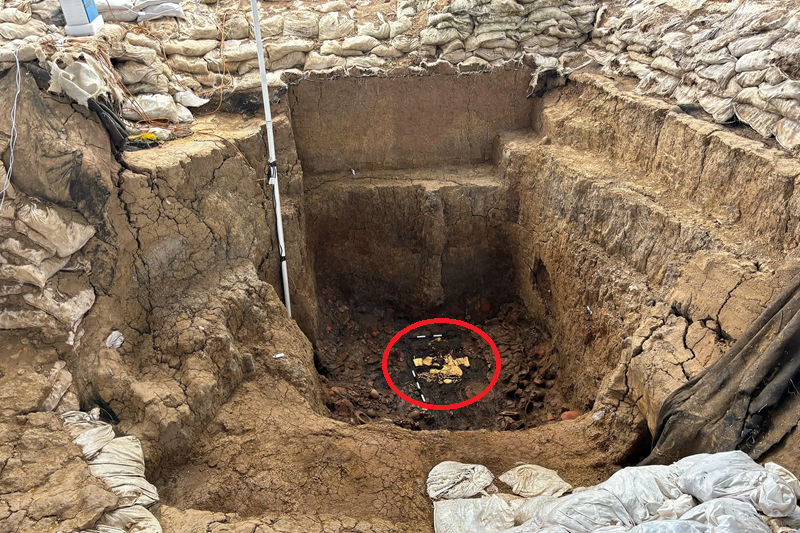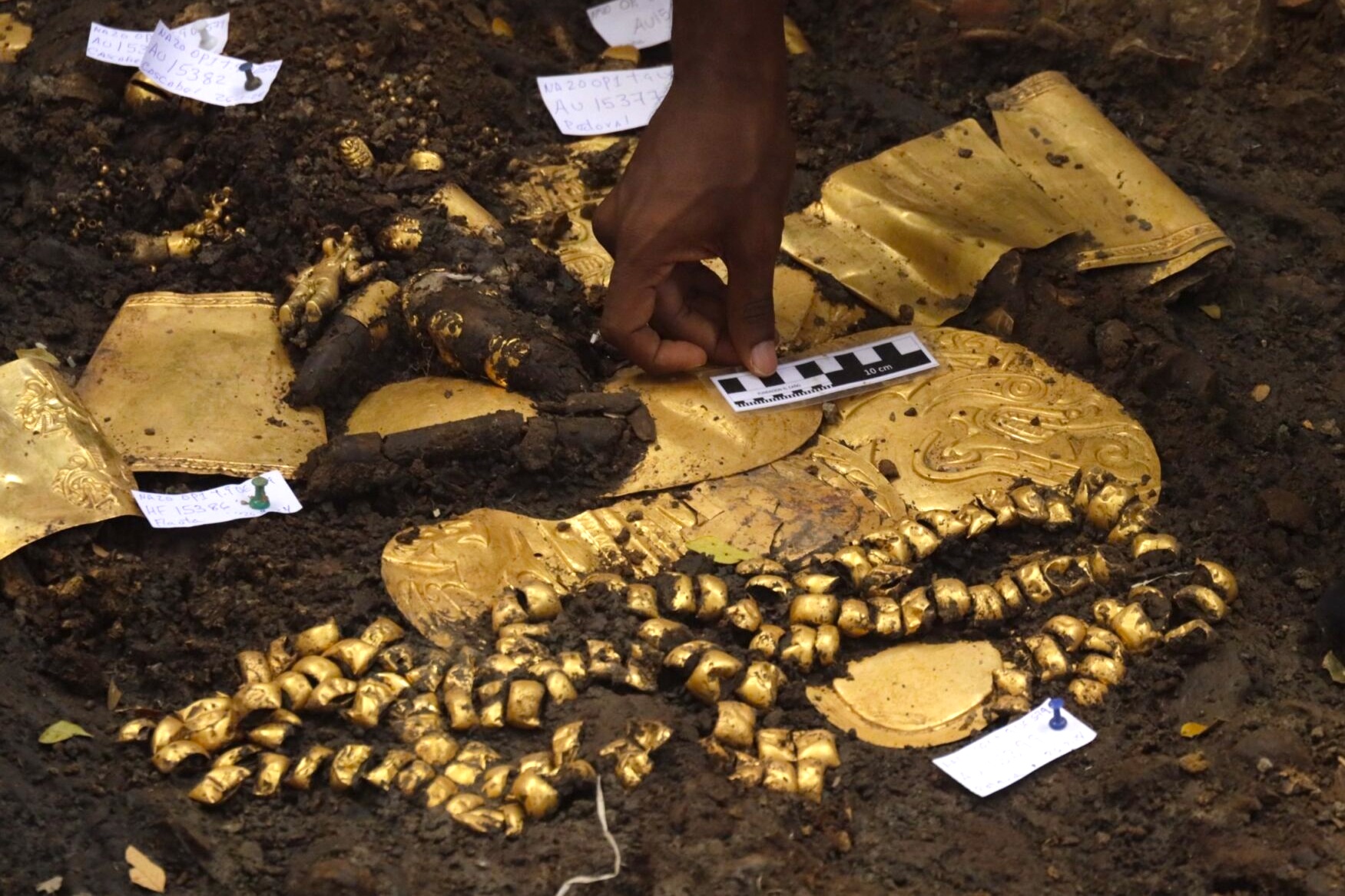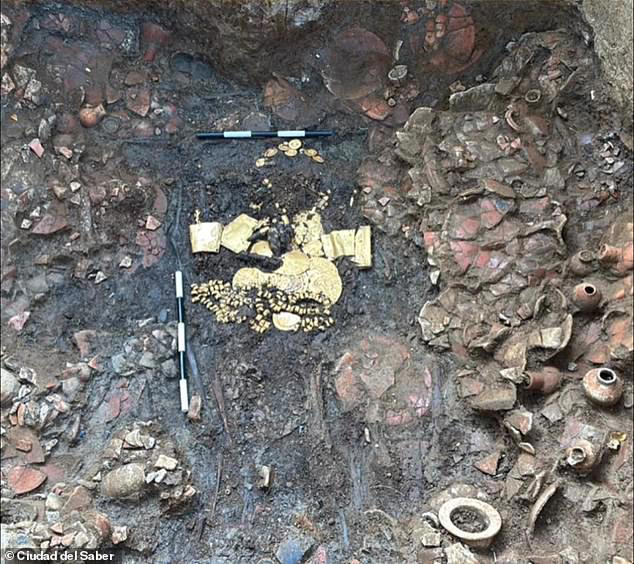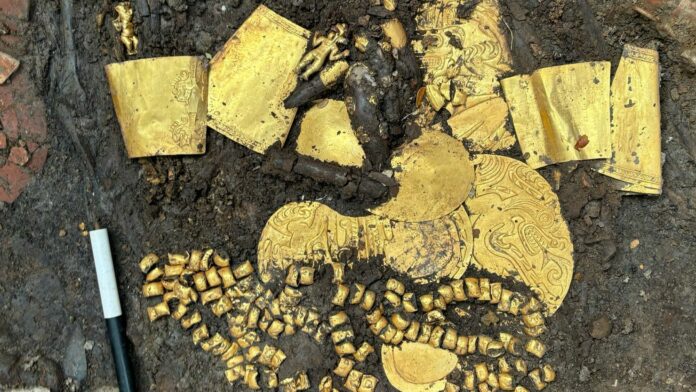Excavation Unveils Ancient High-Status Tomb
Recent archaeological work at El Caño Archaeological Park in Panama’s Coclé province has led to an extraordinary find: the grave of a high-status religious leader from over 1,200 years ago. This site, active since 2008, has now revealed its ninth tomb, according to a recent announcement by Panama’s Ministry of Culture. Dating back to roughly 700 AD, this tomb stands out for its lavish adornments and significant historical artifacts.

Insights from the Newly Discovered Tomb
Dr. Julia Mayo, the project’s lead archaeologist and head of the El Caño Foundation, states that these tombs were designed as final resting places for the elite. The central placement of the remains, accompanied by gold and ceramic artifacts, signifies the deceased’s prominent role in society. The individual, referred to as the “Lord of the Flutes,” appears to have been a religious leader, a conclusion supported by the discovery of animal bone flutes likely used in sacred rituals.

Rituals of Death and the Importance of Sacrifice
The practice of ancestor worship and significant ritual sacrifices are evident at El Caño, viewed as a sacred location by the ancient people. The tomb contained not just the “Lord of the Flutes” but also multiple other human remains, indicating a tradition of sacrificing others to accompany the elite into the afterlife, as highlighted by Dr. Mayo.
Observations on Social Hierarchy and Burial Customs
The archaeological findings suggest a clear distinction in burial practices linked to social status, with elite members receiving multi-body interments and commoners laid in individual graves. The ongoing excavation of the ninth tomb promises to reveal more about these practices, with previous discoveries showing between eight to 32 accompanying bodies.

The Influence of Religious Practices
Unlike previous finds, which primarily included military leaders with their weapons, this tomb emphasizes religious artifacts, underscoring the societal importance of religious roles. This differentiation points to a complex social structure with varied roles and statuses.
Unconventional Burial Practices and Symbolism
The “Lord of the Flutes” was buried face down over a female body, an unusual practice despite face-down burials being common in the region. Nicole Smith-Guzmán from the Smithsonian Tropical Research Institute notes that while this positioning is atypical, it signifies a significant social or relational bond, the specifics of which remain undetermined.

Gold Artifacts and Sociopolitical Connections
The presence of numerous gold items—such as pectorals, belts, and earrings—in the tomb suggests they were used to cement social and political alliances. Artifacts similar in style to those from Colombia’s Quimbaya region indicate a broad network of interaction and exchange spanning from central Panama to northern South America.
El Caño as a Center of Ceremonial Practices
El Caño likely served as a regional ceremonial center or elite necropolis. Despite challenges in DNA preservation due to the climate, these discoveries offer invaluable insights into the chiefdoms of Panama, their societal interactions, economic structures, and religious and gender roles.
Conclusion
The unearthing of the “Lord of the Flutes” tomb provides a significant addition to our understanding of pre-Columbian Panama’s cultural and social framework. As explorations continue, they are expected to further illuminate the complex interrelations and cultural dynamics of these ancient communities, enhancing our comprehension of their rich heritage and contributing to broader archaeological discourse.




